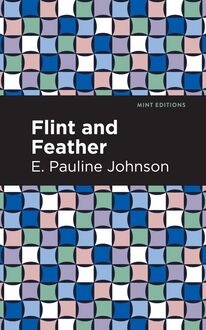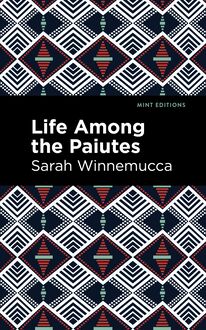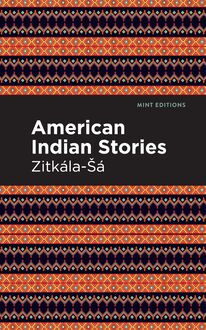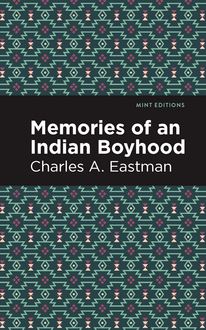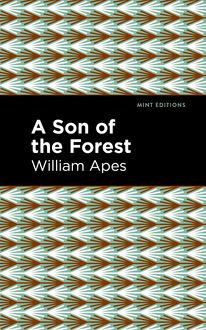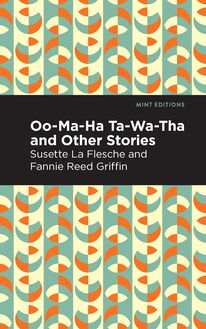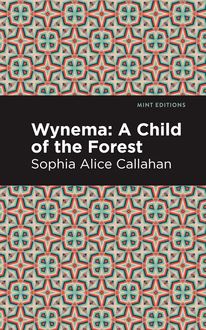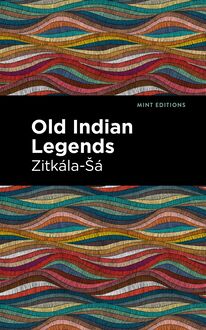-
 Univers
Univers
-
 Ebooks
Ebooks
-
 Livres audio
Livres audio
-
 Presse
Presse
-
 Podcasts
Podcasts
-
 BD
BD
-
 Documents
Documents
-
- Cours
- Révisions
- Ressources pédagogiques
- Sciences de l’éducation
- Manuels scolaires
- Langues
- Travaux de classe
- Annales de BEP
- Etudes supérieures
- Maternelle et primaire
- Fiches de lecture
- Orientation scolaire
- Méthodologie
- Corrigés de devoir
- Annales d’examens et concours
- Annales du bac
- Annales du brevet
- Rapports de stage
La lecture à portée de main
Vous pourrez modifier la taille du texte de cet ouvrage
Découvre YouScribe en t'inscrivant gratuitement
Je m'inscrisThe Traditional History and Characteristic Sketches of the Ojibway Nation , livre ebook
Découvre YouScribe en t'inscrivant gratuitement
Je m'inscrisEn savoir plus
Vous pourrez modifier la taille du texte de cet ouvrage
En savoir plus

Description
The Traditional History and Characteristic Sketches of the Ojibway Nation (1850) is a work of Indigenous American history by George Copway. Written while he was living with his wife and daughter in New York, The Traditional History and Characteristic Sketches of the Ojibway Nation helped establish Copway’s reputation as a leading Native American author of the nineteenth century. Recognized as one of the first books of its kind written by an indigenous author, Copway’s work is an invaluable resource for understanding the history of contact between settlers and indigenous peoples, some of whom, like Copway’s family, assimilated and served as missionaries, translators, and ambassadors. “There is room and opportunity for adventure among the bold, broken, rugged rocks, piled up one upon another in ‘charming confusion,’ on the shores, along the borders of the silent waters, or beneath the solid cliffs against which the waters of Superior break with a force which has polished their rocky surface. The mountains, rivers, lakes, cliffs, and caverns of the Ojibway country, impress one with the thought that Nature has there built a home for Nature’s children.” Raised in a moment of immense cultural change for his people, George Copway played a complicated role as a Methodist missionary and Ojibway historian, preserving the traditions of his people while working to assimilate their religious beliefs with those of the white settlers whose presence so often proved detrimental to their continued existence. In this powerful work, one of the first written texts on Indigenous American history by an indigenous author, Copway reflects on the cultural traditions, geographical territory, and ancestral stories of the Ojibway people. Written in a poetic, meditative prose, The Traditional History and Characteristic Sketches of the Ojibway Nation remains essential reading nearly two centuries after it appeared in print. With a beautifully designed cover and professionally typeset manuscript, this edition of George Copway’s The Traditional History and Characteristic Sketches of the Ojibway Nation is a classic work of Native American literature reimagined for modern readers.
Sujets
Informations
| Publié par | Mint Editions |
| Date de parution | 03 août 2021 |
| Nombre de lectures | 0 |
| EAN13 | 9781513217581 |
| Langue | English |
| Poids de l'ouvrage | 1 Mo |
Informations légales : prix de location à la page 0,0450€. Cette information est donnée uniquement à titre indicatif conformément à la législation en vigueur.
Extrait
The Traditional History and Characteristic Sketches of the Ojibway Nation
George Copway
The Traditional History and Characteristic Sketches of the Ojibway Nation was first published in 1850.
This edition published by Mint Editions 2021.
ISBN 9781513218588 | E-ISBN 9781513217581
Published by Mint Editions ®
minteditionbooks.com
Publishing Director: Jennifer Newens
Design & Production: Rachel Lopez Metzger
Project Manager: Micaela Clark
Typesetting: Westchester Publishing Services
TO
A MOS L AWRENCE , E SQ .,
OF
Boston, Massachusetts,
THIS VOLUME
WITH FEELINGS OF DEEP GRATITUDE, AND SENTIMENTS OF THE HIGHEST RESPECT, IS AFFECTIONATELY INSCRIBED
BY
T HE A UTHOR .
C ONTENTS P REFACE I . T HEIR C OUNTRY II . T HEIR ORIGIN, OR COURSE OF MIGRATION ACCORDING TO THEIR TRADITIONS III . T HEIR WILD GAME IV . P LAYS AND EXERCISES V . T HEIR WARS WITH THE S IOUXS VI . T HE WAR BETWEEN THE I ROQUIS AND WESTERN H URONS, TERMINATING IN THE WARS BETWEEN THE O JIBWAYS AND I ROQUIS IN C ANADA WEST VII . T HE WAR BETWEEN THE O JIBWAYS AND THE EASTERN I ROQUIS VIII . T HE WAR BETWEEN THE O JIBWAYS AND THE EASTERN I ROQUIS IX . T HEIR LEGENDARY STORIES AND HISTORICAL TALES X . T HEIR LANGUAGE AND WRITINGS XI . T HEIR GOVERNMENT XII . T HEIR RELIGIOUS BELIEF XIII . T HE O JIBWAY OR C HIPPEWAY RESIDENTS OF C ANADA WEST XIV . M ISSIONS AND I MPROVEMENTS XV . T HE EARLY DISCOVERY OF THE N ORTH-WEST— T HE FIRST TRADERS AND ADVENTURERS XVI . F URTHER NOTICES OF THE N ORTH-WEST XVII . T HE N ORTH A MERICAN I NDIANS IN GENERAL
P REFACE
In compliance with the oft-repeated request of a number of literary friends, I present this volume to the public. In doing so there is another motive that has influenced me, and I may be pardoned, if here, at the commencement of my task, I briefly record it.
In thus giving a sketch of my nation’s history, describing its home, its country, and its peculiarities, and in narrating its traditionary legends, I may awaken in the American heart a deeper feeling for the race of red men, and induce the pale-face to use greater effort to effect an improvement in their social and political relations.
You must know that my advantages have not been very great for the attainment of knowledge; that, in common with my forest brethren I have, as the saying is, “been brought up in the woods.” I feel incompetent for my work, but am impelled forward by the thought that the nation whose history I here feebly sketch seems passing away, and that unless a work like this is sent forth, much, very much, that is interesting and instructive in that nation’s actions, will with it pass away.
Though I cannot wield the pen of a Macaulay, or the graceful wand of an Irving, with which to delineate an Indian’s life, yet I move a pen guided by an intimate knowledge of the subject it traces out, the joys and the sorrows it records.
It is now many years since I laid aside my bow and arrows, still the love for the wild forest, born with me, yet remains. Twenty months passed in a school in Illinois has been the sum-total of my schooling, save that I have received in the wide world. During my residence of six years among the pale-faces I have acquired a knowledge of men and things, much, very much more I have yet to learn, and it is my desire that my brethren in the far west may share with me my crust of information; for this end I have laboured and do labour, and will continue to labour, till success crowns my efforts or my voice and hand are silent in the home of the departed.
To the Christian and Philanthropist, I present in these pages an account of the rise and progress of events which have greatly advanced the moral elevation of my nation. Should they see in it anything to stimulate them to greater action, now is the time, now the hour to act. It can be proved that the introduction of Christianity into the Indian tribes has been productive of immense good. It has changed customs as old as any on the earth. It has dethroned error, and has enthroned truth. This fact is enough to convince any one of the unjustness and falsity of the common saying, that, “the Indian will be Indian still.”
Education and Christianity are to the Indian what wings are to the eagle; they elevate him; and these given to him by men of right views of existence enable him to rise above the soil of degradation, and hover about the high mounts of wisdom and truth.
To the man of letters I would say, that in compliance with your request, I am aware how far short I have fallen from satisfying you with a recital of the Ojibway’s history.
Much has been lost to the world, through a neglect of educating the red men who have lived and died in the midst of educationary privileges, but have not been allowed to enjoy them. They hold a key which will unlock a library of information, the like of which is not. It is for the present generation to say, whether the last remnants of a powerful people shall perish through neglect, and as they depart bear with them that key.
Give the Indian the means of education and he will avail himself of them. Keep them from him, and let me tell you he is not the only loser.
The Indians at present mingle with the whites. The intercourse they have had together has not in all instances elevated the character of the former. The many hundreds of rude, careless, fearless whites, who have taken up their abode in frontier regions, have induced the red men to associate and unite with them in practices of dissipation. To the Americans at home I look for an antidote for this evil, which they as well as myself must most sincerely regret.
Friends, Christians, your love for mankind extends beyond the border. Your love for mankind has penetrated the forests, and is today shedding its holy influence on many a happy group assembled around a birchen fire. May you not tire or grow faint.
The history of the Ojibways, like that of other Indian tribes, is treasured up in traditionary lore. It has been passed down from age to age on the tide of song; for there is much poetry in the narrative of the old sage as he dispenses his facts and fancies to the listening group that throng around him.
As the first volume of Indian history written by an Indian, with a hope that it may in some degree benefit his nation, and be the means of awakening an interest for the red men of America, in those whose homes are where they once lived and loved, this work is sent forth tremblingly, yet with hope, by its author,
K AH- G E- G A- G AH- B OWH
I
T HEIR C OUNTRY
The extent of territory occupied by the Ojibway nation, is the largest of any Indian possessions of which there is any definite knowledge.
When the Champlain traders met them in 1610, its eastern boundary was marked by the waters of Lakes Huron and Michigan. The mountain ridge, lying between Lake Superior and the frozen Bay, was its northern barrier. On the west, a forest, beyond which an almost boundless prairie. On the south, a valley, by Lake Superior, thence to the southern part of Michigan. The land within these boundaries has always been known as the country of the Ojibways. It comprises some of the most romantic and beautiful scenery. There are crystal waters flowing over rocky beds, reflecting the mighty trees that for centuries have reared their stout branches above them. There are dense forests which no man has entered, which have never waked an echo to the woodman’s axe, or sounded with the sharp report of a sportsman’s rifle. Here are miles of wild flowers, whose sweet fragrance is borne on every southern breeze, and which form a carpet of colours as bright and beautiful as the rainbow that arches Niagara.
The woodland is composed of a great variety of trees, mostly pine, hemlock, oak, cedar, and maple. As the traveller approaches the north, he will meet birch, tamarach, spruce, and evergreen.
In going from east to west, along the borders of the lakes, the scenery is so changing and of such kaleidescope variety and beauty that description is impossible. There is room and opportunity for adventure among the bold, broken, rugged rocks, piled up one upon another in “charming confusion,” on the shores, along the borders of the silent waters, or beneath the solid cliffs against which the waters of Superior break with a force which has polished their rocky surface.
The mountains, rivers, lakes, cliffs, and caverns of the Ojibway country, impress one with the thought that Nature has there built a home for Nature’s children.
Their Lakes
I T IS UNNECESSARY FOR ME to describe minutely every lake that exists in the Ojibway territory. I will mention those of greatest note, and which the traveller as he stood upon the shore has viewed with an admiration bordering on idolatry; for, surely, were there anything besides the Creator worthy of worship it would be His works.
At one time the easternmost lake of the Ojibways was Huron. But they have, by their prowess, gained the waters of Ontario and Erie.
Lake Huron is of great depth. Its waters are known by their beautiful clearness, and by the fact of their rise and fall once in every seven years. Its shores were lined with their canoes at a period shortly subsequent to the introduction of fire-arms into their midst. Rock abounds in great quantities, and the wood consists mainly of cedar, hemlock, pine, and tamarach. The hills rising in the south and in the north-east, present to the observer a very imposing appearance.
From the main there juts forth a point of land, on one side of which is Georgian Bay or Owen’s Sound and the lake. The ledge of rocks near this has the appearance, at a distance, of a fortification. When the waters are calm and clear these rocks can be seen in huge fragments beneath their surface, as if thrown there by some giant in other days.
The great depth of the water of this lake has induced the belief among the Indians that it has a connexion with
-
 Univers
Univers
-
 Ebooks
Ebooks
-
 Livres audio
Livres audio
-
 Presse
Presse
-
 Podcasts
Podcasts
-
 BD
BD
-
 Documents
Documents
-
Jeunesse
-
Littérature
-
Ressources professionnelles
-
Santé et bien-être
-
Savoirs
-
Education
-
Loisirs et hobbies
-
Art, musique et cinéma
-
Actualité et débat de société
-
Jeunesse
-
Littérature
-
Ressources professionnelles
-
Santé et bien-être
-
Savoirs
-
Education
-
Loisirs et hobbies
-
Art, musique et cinéma
-
Actualité et débat de société
-
Actualités
-
Lifestyle
-
Presse jeunesse
-
Presse professionnelle
-
Pratique
-
Presse sportive
-
Presse internationale
-
Culture & Médias
-
Action et Aventures
-
Science-fiction et Fantasy
-
Société
-
Jeunesse
-
Littérature
-
Ressources professionnelles
-
Santé et bien-être
-
Savoirs
-
Education
-
Loisirs et hobbies
-
Art, musique et cinéma
-
Actualité et débat de société
- Cours
- Révisions
- Ressources pédagogiques
- Sciences de l’éducation
- Manuels scolaires
- Langues
- Travaux de classe
- Annales de BEP
- Etudes supérieures
- Maternelle et primaire
- Fiches de lecture
- Orientation scolaire
- Méthodologie
- Corrigés de devoir
- Annales d’examens et concours
- Annales du bac
- Annales du brevet
- Rapports de stage
